Australian Aboriginal Art has been identified as the most exciting contemporary art form of the 20th Century
The Australian Aboriginal art is the oldest form of artistic expression in the world, and the most successful and certainly the longest surviving culture in human history. Art cavings found in the Northern Territory’s Arnhem Land dates back at least 60,000 years. Using soil and rocks, artists are able to produce carvings, ground designs and paintings. The first evidence of Aboriginal ethos or philosophy is evident in the still visible rock art which dates back more than 20,000 years.

Contemporary Australian Aboriginal Art derives its worldwide acclaim from the very roots of Australian Aboriginal Culture and Tradition. It is not new, it is not orchestrated, it is not devised, it is not designed, it is not and never can be a new age “created” wonder.
Although Australian Aboriginals have been using ochres as body paint, on bark and rocks for tens of thousands of years it was not until the 1930’s that the first paintings were done.
These were not done in ochre or in dot art but in watercolour at the Hermannsburg Mission near Alice Springs. They illustrated desert landscapes. The first exhibition was in Adelaide, in 1937 by the most famous of the first aboriginal watercolour painters, Albert Namatjira.
In 1971, a school teacher was working with Aboriginal children in Papunya, near Alice Springs. He noticed whilst the Aboriginal men were telling stories they would draw symbols in the sand. He encouraged them to paint the stories onto canvas and board. This began the famous Aboriginal art movement. It was a major jump for indigenous people to start painting their stories onto western facades which were a very foreign concept to them.
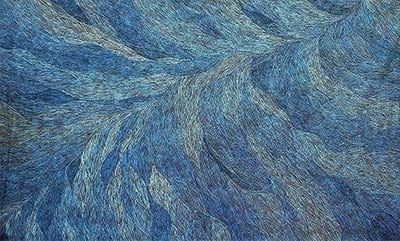
Since then Australian Aboriginal Art has been identified as the most exciting contemporary art form of the 20th Century.
Aboriginal Artists need permission to paint particular stories. They inherit the rights to these stories which are passed down through generations within certain skin groups. An Aboriginal artist cannot paint a story that does not belong to them through the family.
Creation Law is the heart of Aboriginal culture and consequently for Aboriginal art. It sets down the Dreaming which provides the identity for Aboriginal people and their association or link to the land.

Dreamtime or Jukurrpa and Tingari (the term varies according to their particular local language) is the translation of the Creation of time for the Aboriginal People. Most Aboriginal Artists paint facets of their Dreaming which forms a share of their inheritance and identity.
Many people believe that dots were used to hide information from white men when the Aboriginal people became afraid that they would be able to see and understand their sacred, private knowledge. The dots were used to obscure the secret symbols or iconography underneath.
Aboriginal Artists need permission to paint particular stories. They inherit the rights to these stories which are passed down through generations within certain skin groups. An Aboriginal artist cannot paint a story that does not belong to them through family

Aboriginal art differs in character and style depending on which region the artist is from and what language is spoken. Most contemporary art can be recognised from the community where it was created.
Contemporary Aboriginal art has been an incentive for remote Aboriginal communities, in many places being the only business in small communities providing significant income to Aboriginal families.
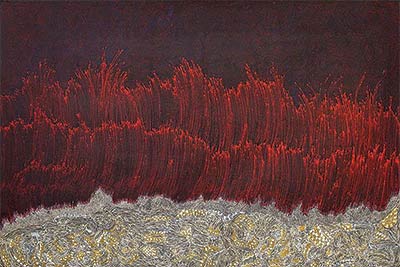
A great deal is written about names of deceased people not being mentioned, but how many people worldwide know that still, even the young, modern Aboriginal people who live and work with white Australians, abide by the old rules of not saying, for example, the name of a living relative that is inappropriate.
They will say “the father for that young one there” or the like. Taking this into consideration, a collector can be assured that a painting of Purnululu (Bungles) would be done by an Artist entitled to paint that country, a desert-style painting would not be attempted by an Artist from Kalumburu.

They have no need to depict other than their own country, no desire and no intention.
By the same token, the nature of the interaction between tribes in a particular area means that many Aboriginal people have knowledge of each other’s country and beliefs,
There are artists to be not only proud of the stories of their paintings, but very truthful.
Aboriginal art differs in character and style depending which region the artist is from and what language is spoken. Most contemporary art can be recognised from the community where it was created

Aboriginal art requires its own education. There is an abundance of knowledge that must be learnt before engaging with a piece of Aboriginal art. Most Australians and tourists might think it is just dots and fine lines. This is a myth. Only artists from certain tribes are allowed to adopt the dot technique. Where the artist comes from and what culture has informed his/her’s tribe will depend on what technique can be used. It is considered both disrespectful and unacceptable to paint on behalf of someone else’s culture. It is simply not permitted.
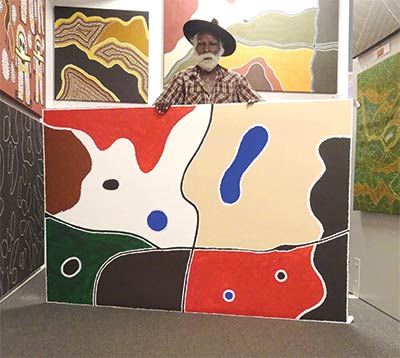
All Aboriginal artwork tells a story. Most art is based on the artist’s individual journey, which may be about their parents, adoption, warriors or daily life chores such as fishing. In rarer cases, the art is reflective of their tribe or captures the heartache of the stolen generation.
Aboriginal artists cannot paint a story that is not from their lineage. If they are seeking to paint a story concerning historical or sacred information, they must be given permission before they can proceed.
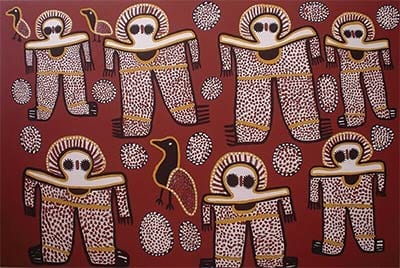
It is important that each artist sticks to the stories and artistic techniques born from their tribe. Without words to communicate, pictures take their place. Aboriginal languages in spoken form do not exist like they once did either. Each tribe has a different dialect; therefore, each artist has a different story. There are about 500 different Aboriginal languages; so, no two Aboriginal artworks are ever the same, and it comes as no surprise that there are so many varieties of techniques. It is a reflection of the individual artist.
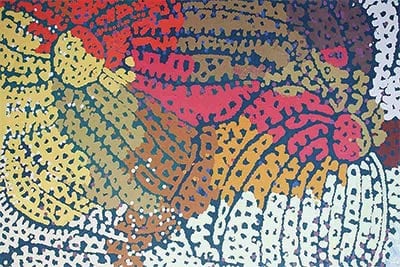
Even though most Aboriginal art is in the form of painting, there are many pieces of art created using other media. For example, there is high demand at the moment for monoprints, which are single prints using natural rock sediments such as ochre (pronounced oak-er) and acrylic oils mostly. For example, artist Dan Kelly, on the Mornington Peninsula in Melbourne, likes to burn symbols onto wood to create his artwork. Other wooden artwork includes weaponry, boomerangs and plates.